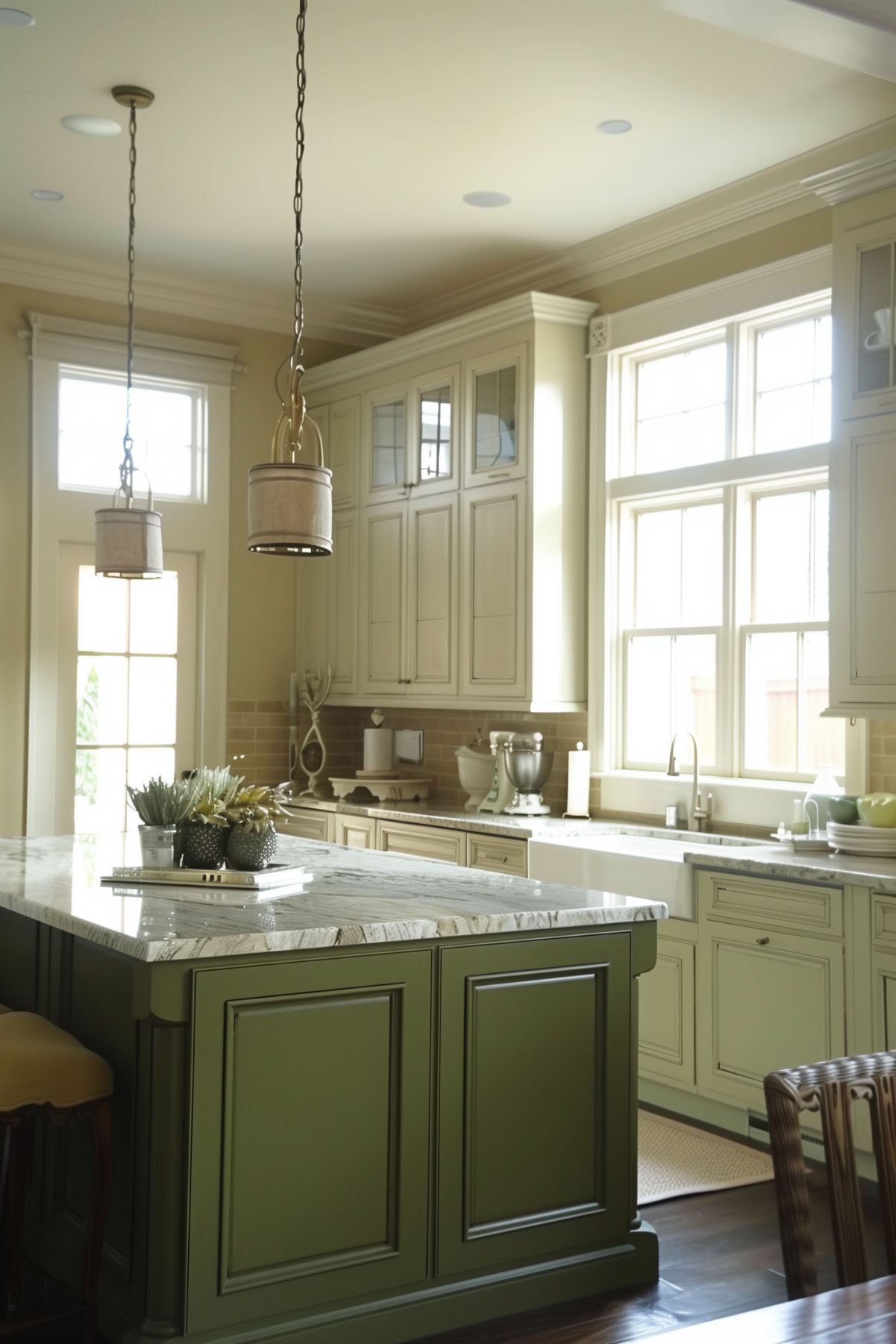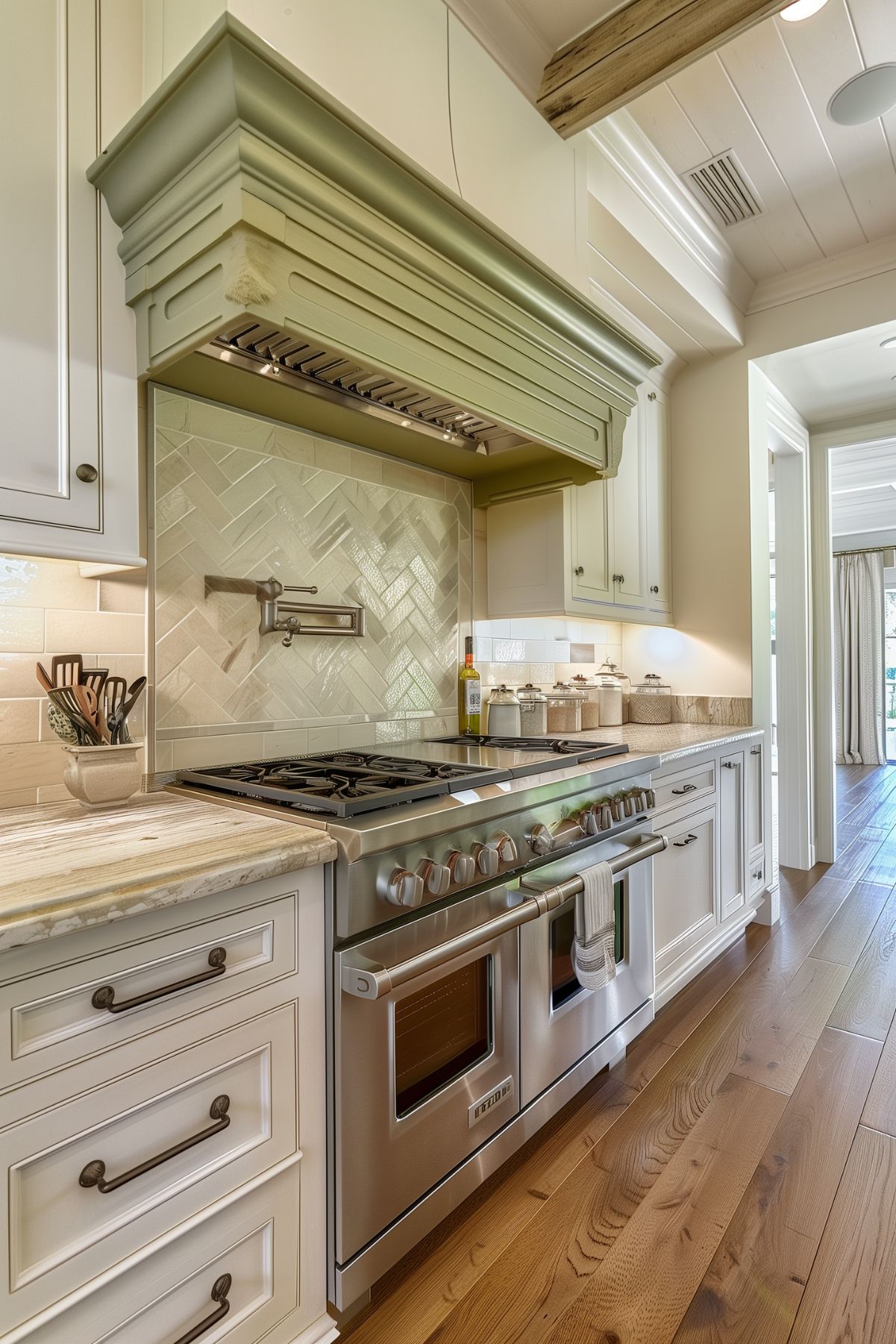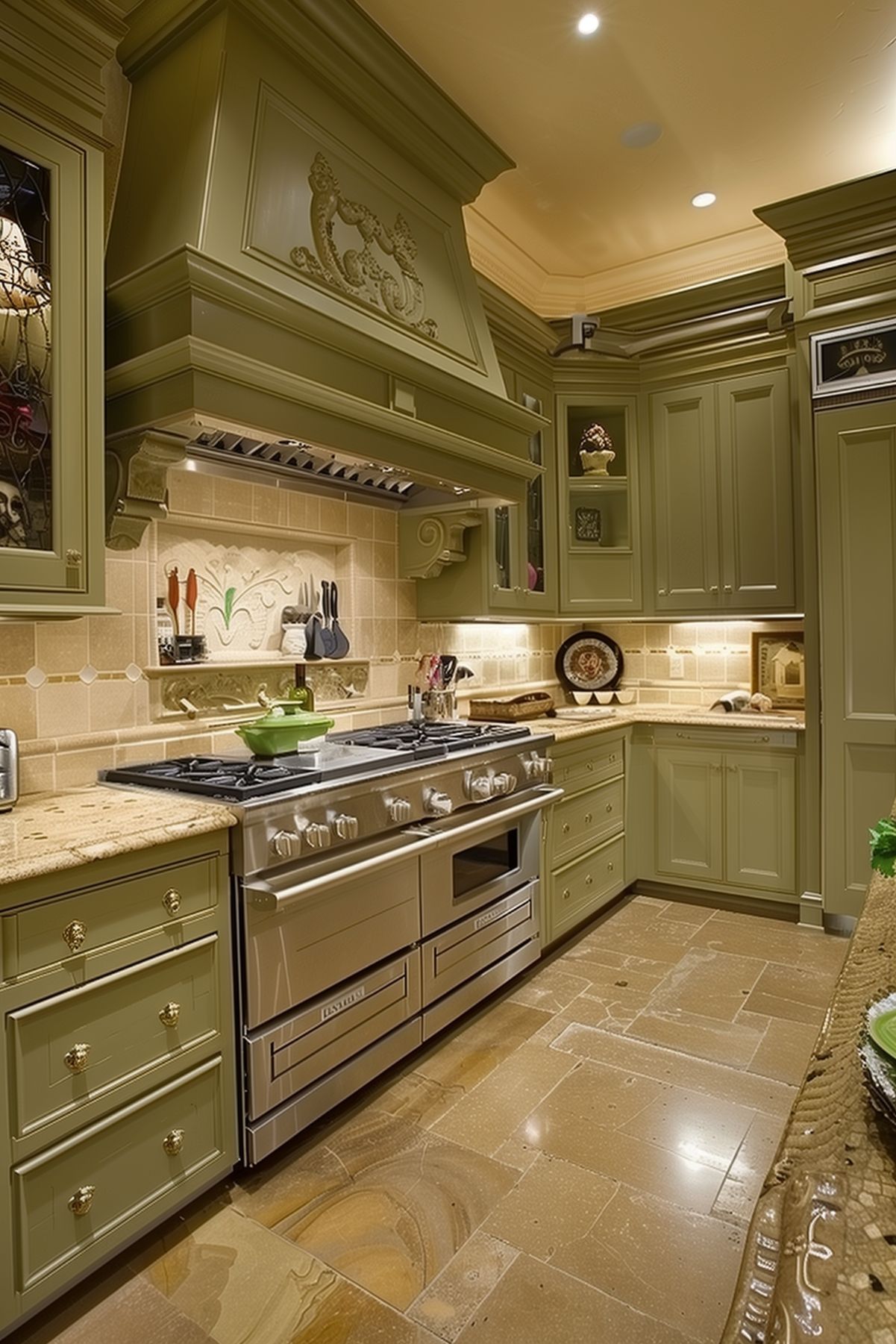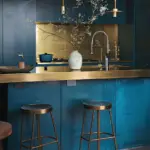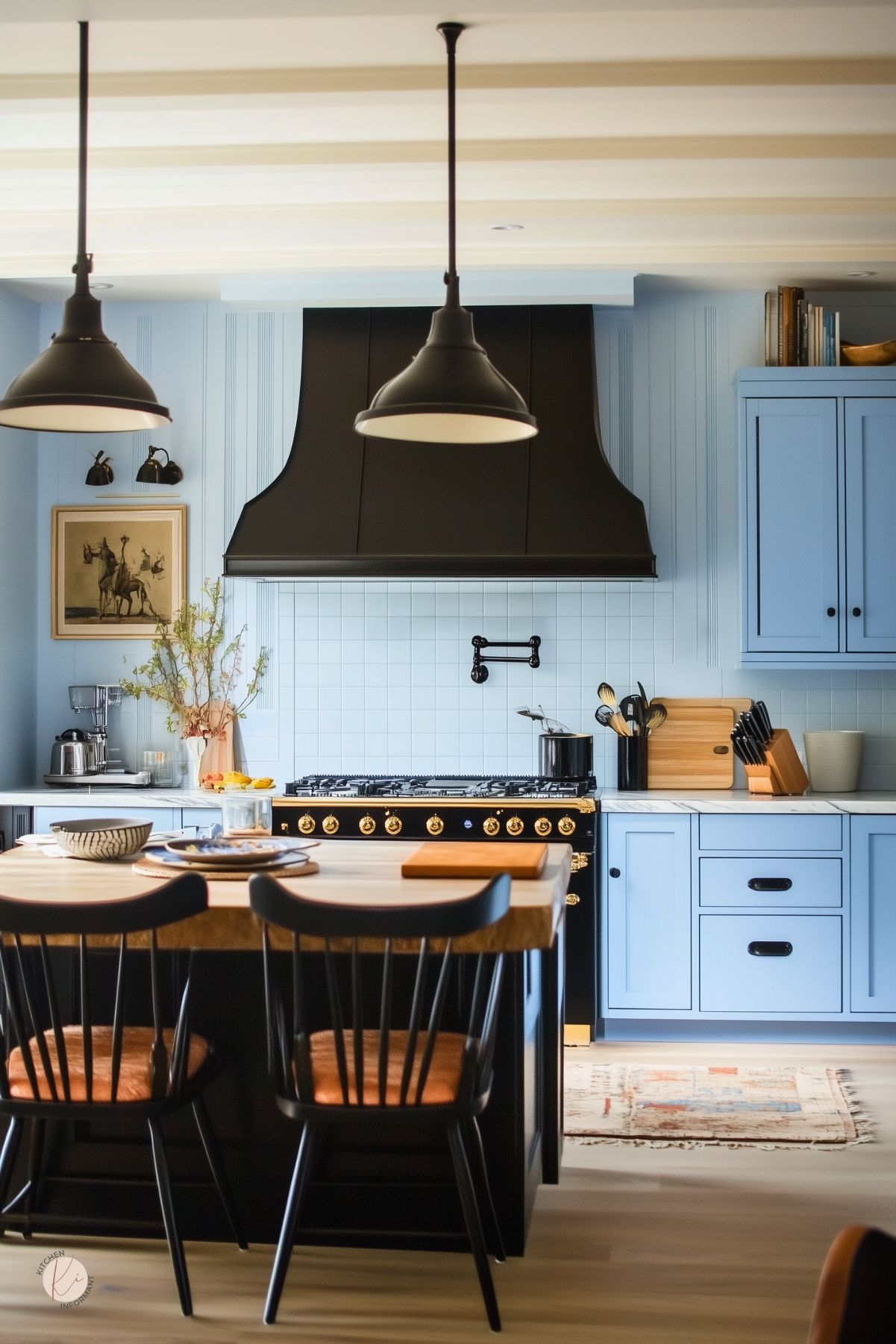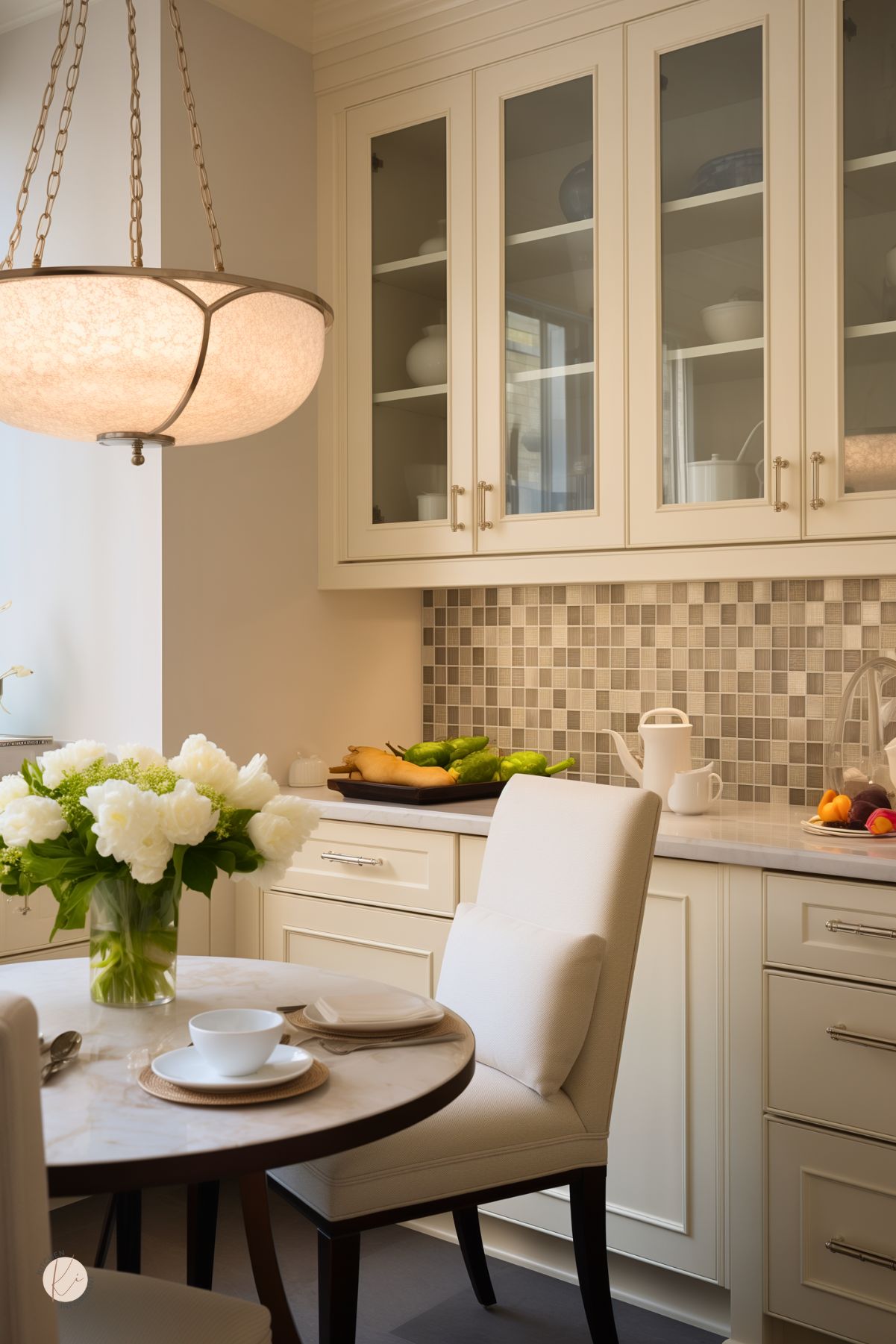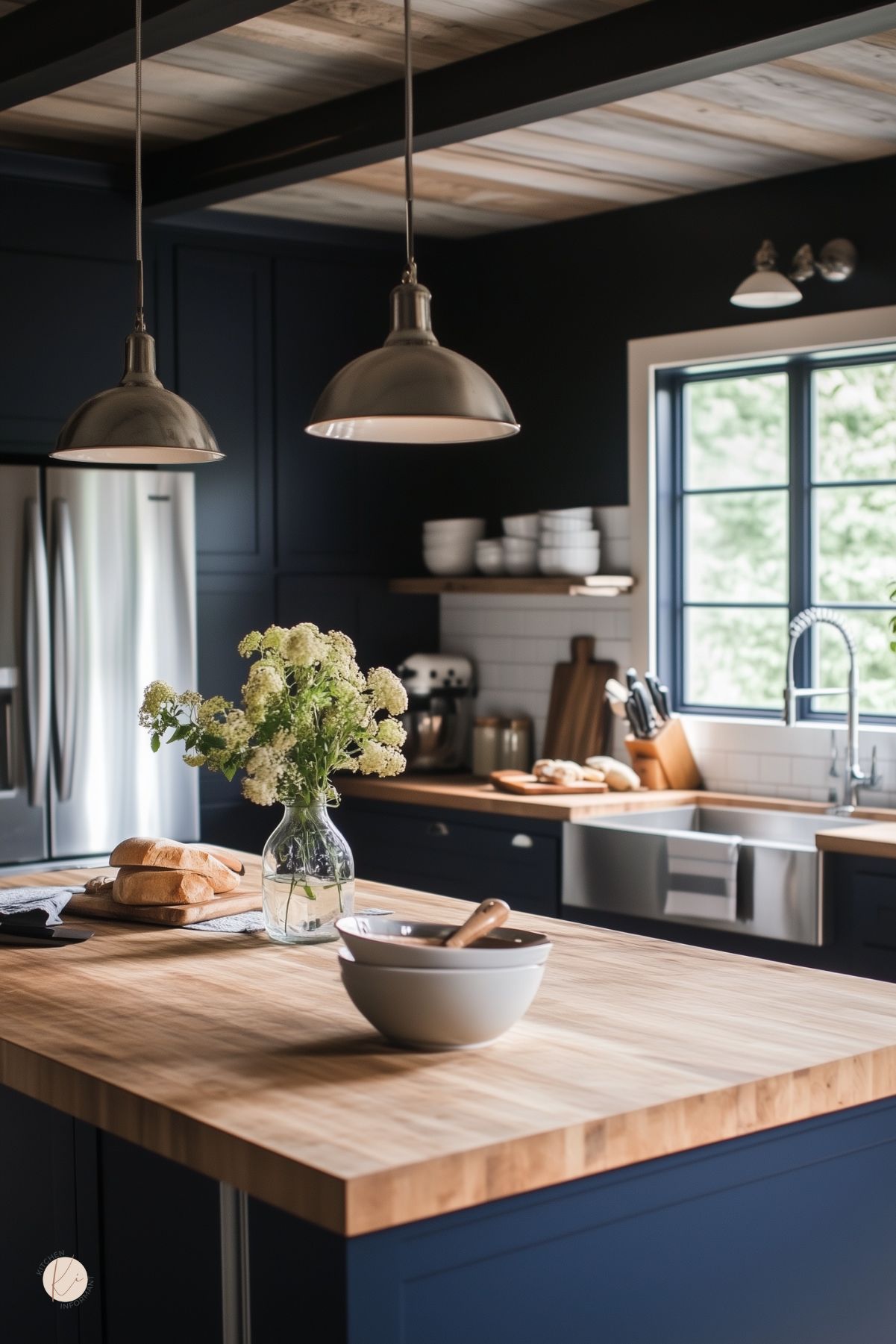Olive and cream kitchens are a popular choice for homeowners who want a warm and inviting feel in their cooking space.
These colors create a classic and timeless look that can be easily customized to fit any style or design preference.
The combination of olive and cream can create a cozy and elegant atmosphere that is perfect for entertaining guests or relaxing with family.

One of the main appeals of olive and cream kitchens is their versatility.
These colors can be paired with a variety of other hues to create a unique color scheme that reflects the homeowner’s personality and style.
Additionally, olive and cream are neutral colors that can be used as a backdrop for bold accents or patterns.
This makes it easy to update the look of the kitchen without having to completely overhaul the design.
Designing an olive and cream kitchen requires careful consideration of color coordination and themes.
Homeowners should choose complementary colors that enhance the overall look and feel of the kitchen.
Additionally, selecting the right appliances and fixtures can make a big difference in the final design.
By taking the time to carefully plan out the design, homeowners can create a beautiful and functional kitchen that they will love for years to come.
Key Takeaways
- Olive and cream kitchens are a popular choice for homeowners who want a warm and inviting feel in their cooking space.
- The versatility of olive and cream colors makes it easy to customize the design to fit any style or preference.
- Careful consideration of color coordination, themes, and appliances is necessary to create a beautiful and functional olive and cream kitchen.
The Appeal of Olive and Cream Kitchens
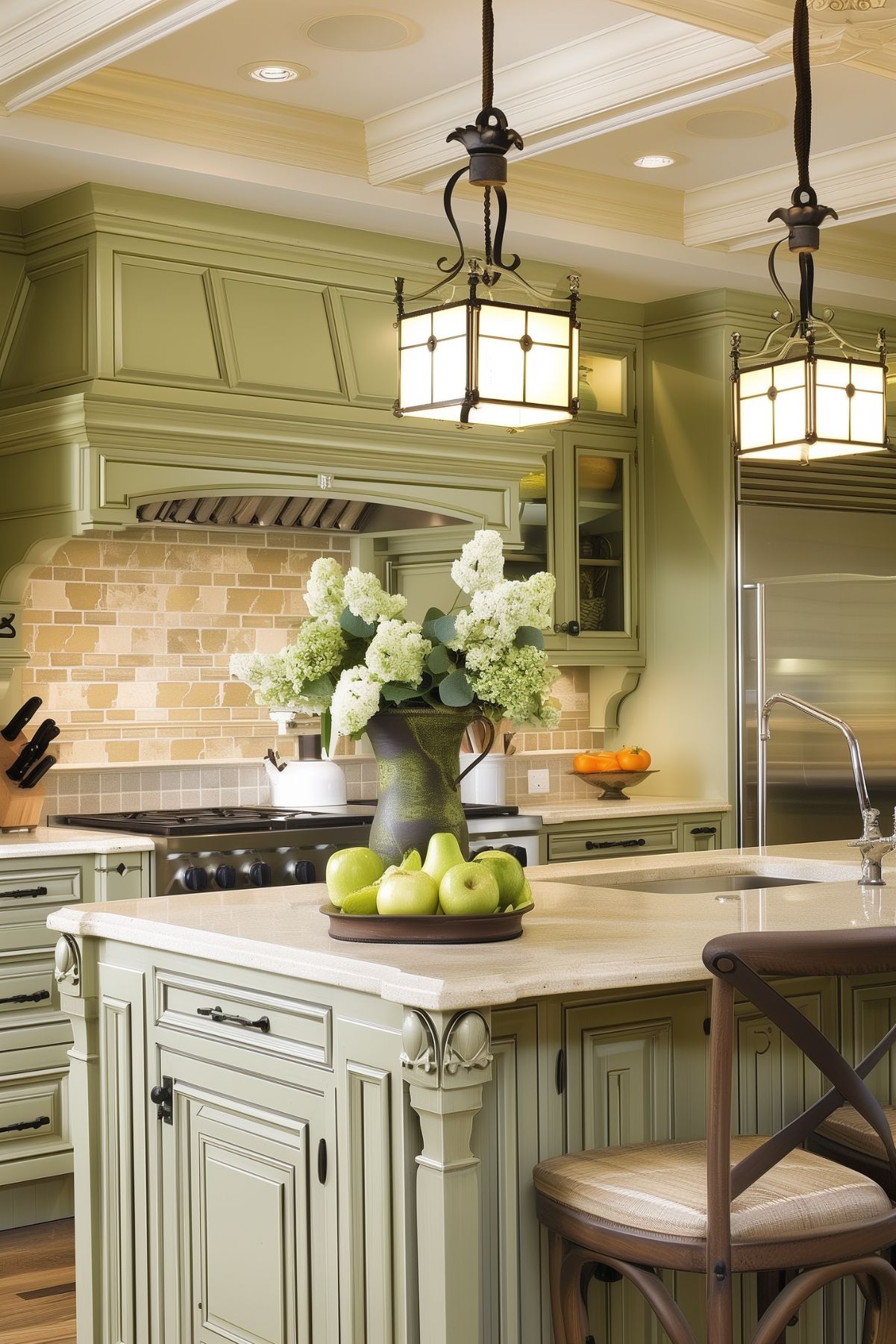
Olive and cream kitchens have become increasingly popular in recent years. The combination of the soft, neutral cream color and the earthy, warm olive green creates a cozy and inviting atmosphere in the kitchen.
This section will explore the reasons why olive and cream kitchens are so appealing.
Versatility
One of the greatest appeals of olive and cream kitchens is their versatility.
The neutral cream color can be paired with a variety of different colors, materials, and textures to create a unique and personalized look.
Olive green, on the other hand, adds a touch of warmth and depth to the kitchen, making it feel inviting and cozy.
The combination of these two colors can be used to create a variety of different styles, from traditional to modern.
Timelessness
Another reason why olive and cream kitchens are so appealing is their timelessness.
Unlike trendy color schemes that come and go, olive and cream kitchens have a classic and timeless look that will never go out of style.
This makes them a great investment for homeowners who want a kitchen that will look great for years to come.
Natural Elements
Olive and cream kitchens often incorporate natural elements, such as wood or stone, which adds to their appeal.
These natural materials add warmth and texture to the kitchen, creating a cozy and inviting atmosphere.
Additionally, the use of natural materials helps to bring the outdoors inside, which is especially appealing for those who love nature.
Designing Your Olive and Cream Kitchen

When designing an olive and cream kitchen, there are several important factors to consider.
From choosing the right shades to selecting materials for countertops and cabinets, every decision will impact the overall look and feel of the space.
Here are some key considerations to keep in mind:
Choosing the Right Shades
One of the most important decisions when designing an olive and cream kitchen is selecting the right shades.
Real Homes suggests adding cooler tones like greys and dark blues to a cream kitchen to create depth and contrast.
However, it’s important to choose a cream that doesn’t have too much of a yellow undertone if you want to introduce these more steely tones.
For olive, consider a muted, earthy shade that complements the cream without overpowering it.
Layout Considerations
Another important consideration is the layout of the kitchen.
When designing an olive and cream kitchen, it’s important to think about how the space will be used and how to best utilize the available square footage.
Consider factors like the placement of appliances, the flow of foot traffic, and the amount of counter space needed for food prep and storage.
Material Selection for Countertops and Cabinets
The materials used for countertops and cabinets can have a big impact on the overall look and feel of an olive and cream kitchen.
For countertops, Designing Idea suggests using natural stone like granite or quartz, which can add texture and depth to the space.
For cabinets, consider using wood with a light or medium stain to complement the cream and olive tones.
Lighting and Accessories
Finally, don’t forget about lighting and accessories when designing an olive and cream kitchen.
Olive and Barr recommends using warm, soft lighting to create a cozy atmosphere in the space.
Accessories like plants, artwork, and decorative accents can also help tie the room together and add personality to the design.
Color Coordination and Themes

Creating a cohesive color scheme is essential for achieving a stunning Olive and Cream kitchen. By coordinating wall colors, flooring options, accent colors, and features, homeowners can create a harmonious and inviting space.
Wall Colors and Textures
When it comes to wall colors and textures, Olive and Cream kitchens offer a wide range of options.
Light cream walls can provide a neutral backdrop for dark olive cabinets, while olive walls can add depth and richness to the space.
Textured walls, such as brick or stone, can also add visual interest and contrast to the kitchen.
Flooring Options
Flooring is another important aspect of Olive and Cream kitchen design.
Light-colored hardwood floors can complement cream cabinets, while dark wood floors can provide a striking contrast to olive cabinetry.
Ceramic or porcelain tile in neutral shades can also be a great choice for homeowners who prefer easy-to-maintain flooring.
Accent Colors and Features
Accent colors and features can tie the entire Olive and Cream kitchen together.
Warm metallic finishes, such as copper or gold, can add a touch of luxury to the space.
Greenery, such as potted herbs or plants, can bring a natural element to the kitchen.
Bold accent colors, such as navy blue or deep red, can add drama and interest to the space.
Appliances and Fixtures

Selecting Appliances for Your Color Scheme
When selecting appliances for an olive and cream kitchen, it’s important to consider the color scheme.
Stainless steel appliances can complement the warm tones of cream and olive green cabinets.
However, if you prefer a more cohesive look, consider matching your appliances to your cabinets.
For example, cream-colored appliances can blend seamlessly with cream cabinets, creating a streamlined look.
Another option is to mix and match appliances in different finishes.
For example, a cream refrigerator and dishwasher can be paired with a stainless steel oven and range. This can create an interesting contrast and add depth to the overall design.
Sink and Faucet Styles
The sink and faucet are important fixtures in any kitchen, and they can also contribute to the overall design of an olive and cream kitchen.
For a traditional look, a porcelain sink with a classic faucet can be a great choice. This can complement cream cabinets and add a vintage touch to the space.
For a more modern look, a stainless steel sink with a sleek, minimalist faucet can be a great choice. This can complement stainless steel appliances and add a contemporary touch to the space.
Another option is to choose a sink and faucet in a coordinating color.
For example, a cream sink with a brushed gold faucet can add warmth and elegance to the space.
Real-Life Examples of Olive and Cream Kitchens
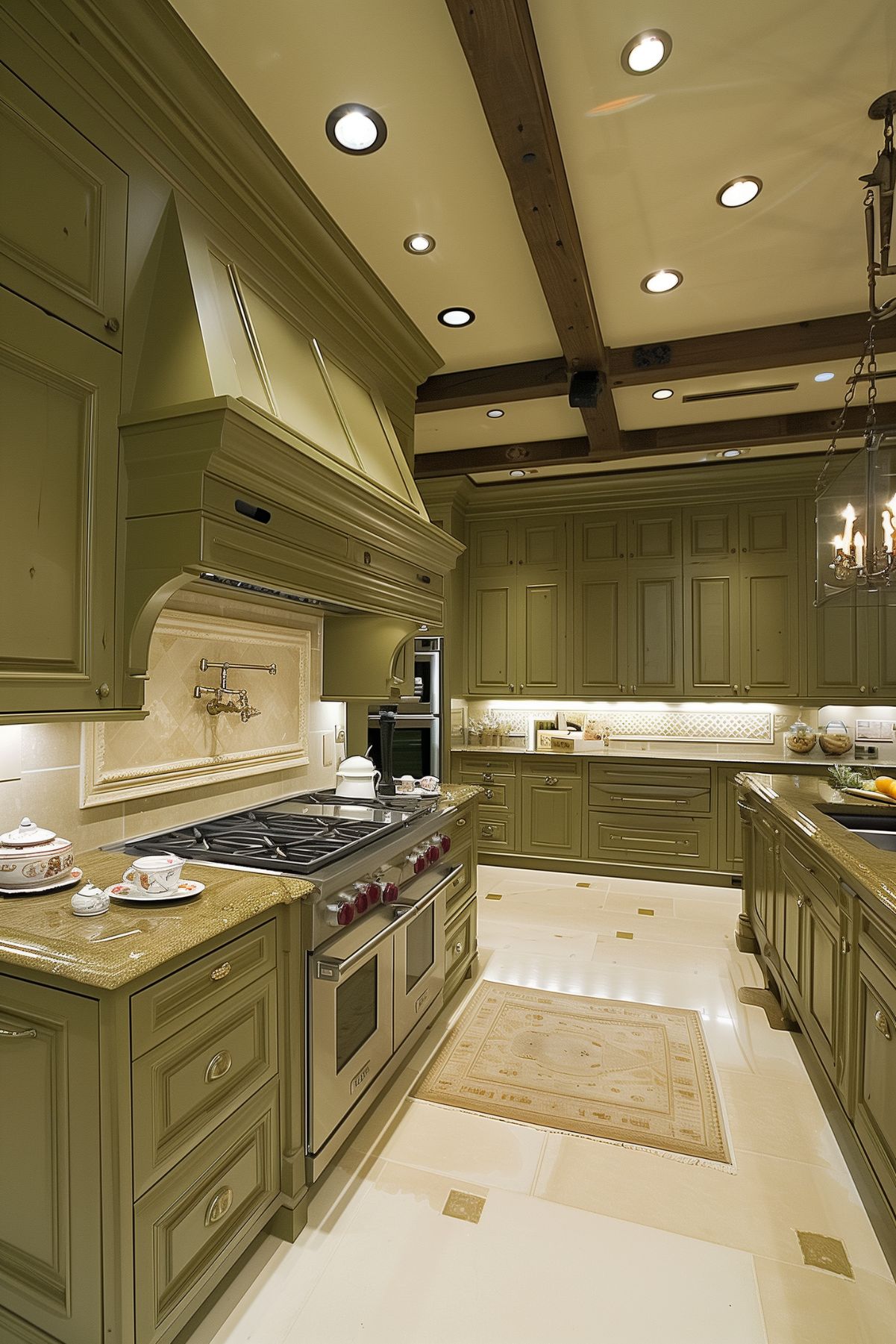
Olive and cream kitchens are a popular choice for homeowners who want to create a warm and inviting space in their homes. Here are some real-life examples of olive and cream kitchens that showcase the beauty and versatility of this color scheme.
